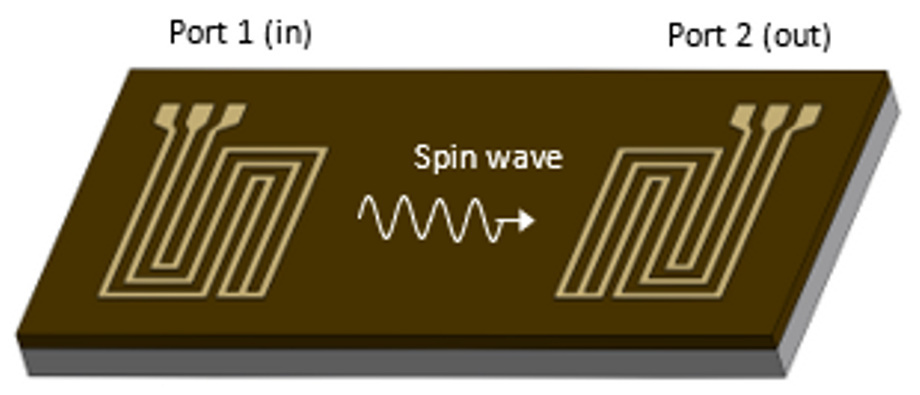Description:
By harnessing coupling between magnetic and acoustic domains, this device is efficient for signal processing well into the mm-wave range
Background
Current acoustic transducers, filters, sensors, and communication systems face issues related to efficiency, frequency selectivity, tunability, and miniaturization. For example, acoustic wave filters are useable only up to about 6 GHz, beyond which excessive acoustic losses and dimensional scaling limits make acoustic devices ineffective. Further, some transducers may exhibit limited conversion efficiency or frequency response, and existing filters struggle with precise frequency control and adaptability. Additionally, these devices may encounter challenges in sensitivity, stability, or response time when detecting physical changes or external stimuli, such as pressure, temperature, or magnetic fields. Current devices are therefore inadequate to support ever-increasing data rates in next-generation mobile communications operating at higher frequencies.
Technology Description
Magneto-acoustic devices exploit the interaction between magnetic and acoustic properties, leveraging the magnetostrictive effect to enable applications in wireless communication, sensing, and information processing. By harnessing this coupling between magnetic and acoustic domains, magneto-acoustic devices offer unique capabilities and performance advantages in a variety of applications, such as transducers, filters, sensors, and communication systems. The devices developed by OSU researchers will fill a niche where acoustic wave devices falter due to large attenuation losses and where electromagnetic wave filters are too large for mobile applications. The devices utilize surface and bulk magneto-acoustic spin-wave signal processing systems to provide advantages in energy efficiency, miniaturization, and interference resistance. The devices are configured to produce surface acoustic waves in the plane of a magnetostrictive material to parametrically amplify the spin waves. In this way, signal processing systems achieve the benefits of both spin wave and acoustic wave devices, taking advantage of the low dispersion and high dynamic range of acoustic waves coupled with the tunability and nonlinear effects provided by spin waves. This will enable efficient small package devices compatible with high-frequency mm-wave communications at 5G and beyond.

Features & Benefits
- Efficient local amplification of spin waves in ferromagnetic film
- Small package footprint
- Filters well into millimeter wave frequencies (~30 to 300 GHz)
Applications
- Next-Generation wireless communication
- Internet-of-Things (IoT)
- High-efficiency signal processing
Status
PCT/US2023/020046, Patent application submitted